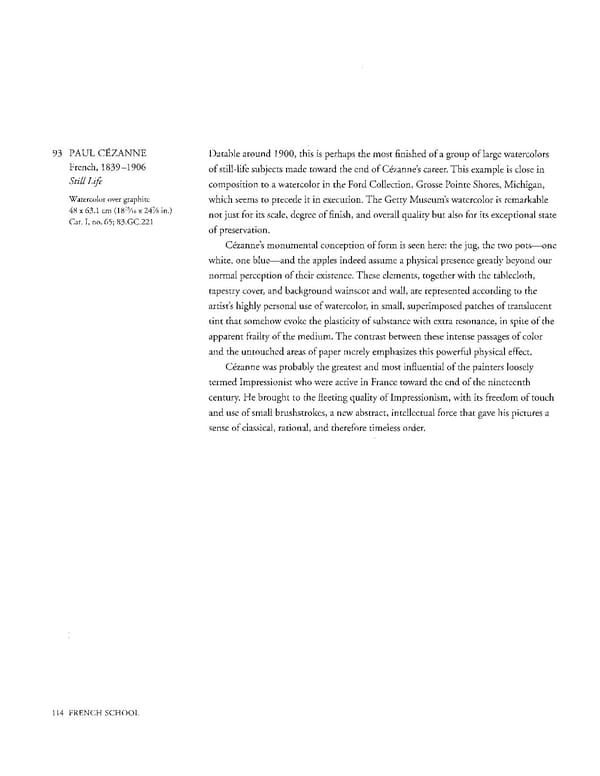93 PAUL CEZANNE Datable around 1900, this is perhaps the most finished of a group of large watercolors French, 18391906 of stilllife subjects made toward the end of Cezanne's career. This example is close in Still Life composition to a watercolor in the Ford Collection, Crosse Pointe Shores, Michigan, Watercolor over graphite which seems to precede it in execution. The Getty Museum's watercolor is remarkable 48 x 63.1 cm (18 15/16 x 24 in.) not just for its scale, degree of finish, and overall quality but also for its exceptional state Cat. I, no. 65; 83.GC.221 of preservation. Cezanne's monumental conception of form is seen here: the jug, the two pots—one white, one blue—and the apples indeed assume a physical presence greatly beyond our normal perception of their existence. These elements, togethet with the tablecloth, tapestry cover, and background wainscot and wall, are represented according to the artist's highly personal use of watercolor, in small, superimposed patches of translucent tint that somehow evoke the plasticity of substance with extra resonance, in spite of the apparent frailty of the medium. The contrast between these intense passages of color and the untouched ateas of paper merely emphasizes this powerful physical effect. Cezanne was probably the greatest and most influential of the painters loosely termed Impressionist who were active in France toward the end of the nineteenth century. He brought to the fleeting quality of Impressionism, with its freedom of touch and use of small brushstrokes, a new abstract, intellectual force that gave his pictures a sense of classical, rational, and therefore timeless order. 114 FRENCH SCHOOL
 Masterpieces of the Getty Museum: Drawings Page 114 Page 116
Masterpieces of the Getty Museum: Drawings Page 114 Page 116